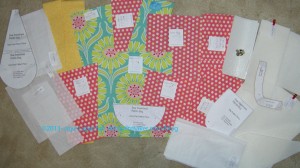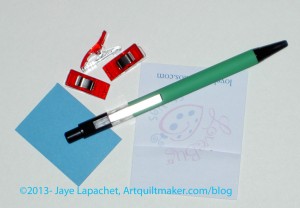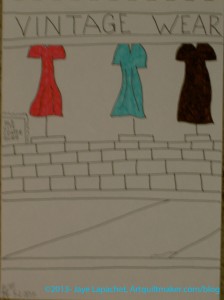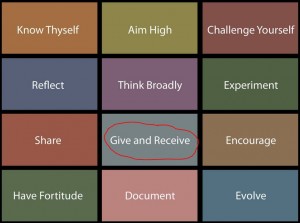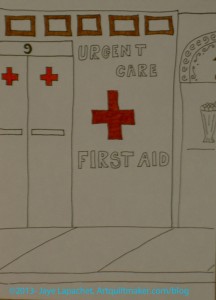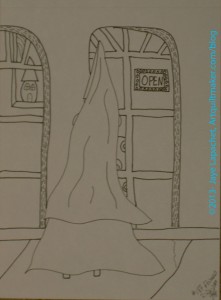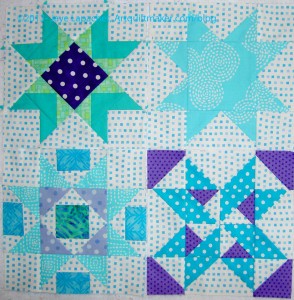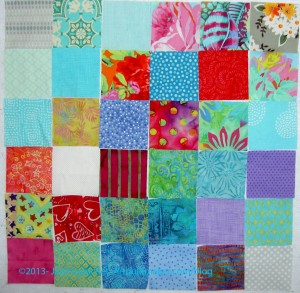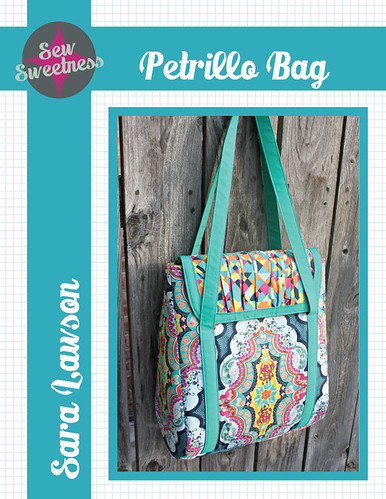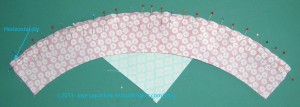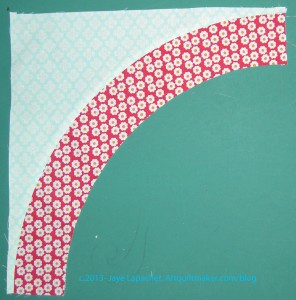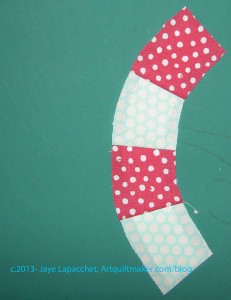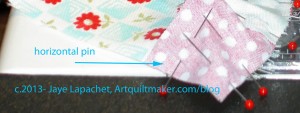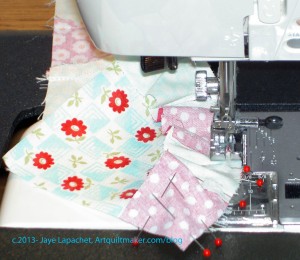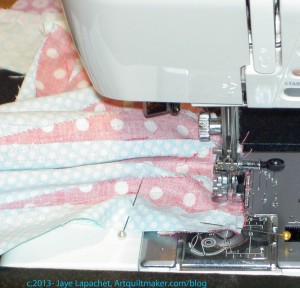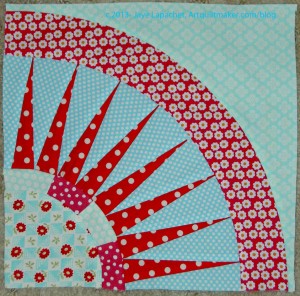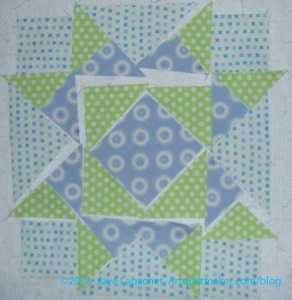
This is the group of stars from the week of April 8 (I believe). They were a lot more work than I anticipated or expected. Somehow, they were temperamental and needed more attention than their 8″ siblings. I was also in ‘a mood’ for some of the week, which didn’t help either.
One of the things that happens when making blocks, regardless of how many you make, is that they don’t always come out the way you think they will. In the best of circumstances, I had to rearrange the look of blocks by cannibalizing parts of other in-progress blocks. In the worst circumstances, I removed certain fabrics completely and cut new pieces in order to be satisfied with the outcome.
The above, with green and lavender, is the first version of the Missouri Star. I realized, again, that the green needed to be away from the background. I don’t know why I forget that, but I did until it was all up on the design wall. It took me looking at the pieces on the design wall to see how nicely the green and background were blending into each other.
I also realized that there was too much green. I love that green, but a little goes a long way.

I changed out a few fabrics and rearranged some of the pieces to come up with different options. The arrangement, left, is the iteration with which I am most in love. I moved some of the darker blues from the Flying Cloud Star block into the center, but it didn’t work for me. I tried a variety of the medium batiks that I have been enjoying in other blocks. The combination that I have now is not a usual one, but I like it and I think it works.

The dark blues in the first version of the Flying Cloud Star (below) just don’t work for me. Somehow they stood out too much, I guess.
I was trying to add in some more of the fuchsia that I used in Mrs. Lloyd’s Favorite in the 12″ group. It is one of the Simply Color ombres and I don’t have much, if any, of the fuchsia part of the fabric left. Thus, the one I used in the Flying Cloud is a different fabric. It isn’t as dark in person as it looks in the photo. It is also a solid.

After trying a few different options, decided, again, on the medium value batik. I worry about choosing mediums all the time. They do not seem like a bold choice. I do love those batiks.
Lesson?
MAKE VISUAL DECISIONS VISUALLY
THERE IS ALWAYS MORE FABRIC, SO CHANGE OUT ONE YOU DON’T LIKE.

The last photo shows the finished blocks and I am pretty pleased with them.
